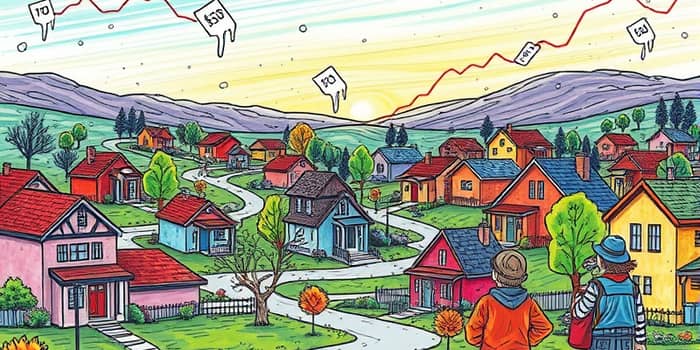
As we move into mid-2025, key indicators suggest that the U.S. housing market is entering a period of moderation after years of rapid price gains. Buyers, sellers, and investors alike are adapting to a new environment shaped by rising supply, high borrowing costs, and regional variations.
According to the S&P CoreLogic Case-Shiller Index, U.S. home prices rose just 2.7% year-over-year in April 2025, down from a 3.5% increase in March. This represents the smallest annual gain in nearly two years, signaling a pronounced deceleration in what was once a blistering market.
On a seasonally adjusted basis, national prices actually fell 0.4% from March to April 2025. Meanwhile, the median home price in Q1 2025 was $416,900, marking a 2.32% decline from the same period a year earlier.
Regionally, 11 of the 50 major metro areas showed year-over-year price declines as of May 2025. Markets in Florida and Texas were particularly hard hit, contributing to the 42 housing markets nationwide that have recorded declines.
Forecasts for the rest of 2025 predict modest home price increases between 1.3% and 4.1%, a stark contrast to the double-digit gains witnessed during the pandemic years.
Mortgage rates have peaked at 7.04% in early 2025, before easing slightly to around 6.6% by mid-year. These levels remain historically elevated and continue to weigh on buyer demand.
As a result, potential buyers face a delicate balance: greater negotiating leverage on price against elevated mortgage rates that still stretch budgets.
After years of historically low levels, existing home inventory has risen by approximately 20% year-over-year. Yet it remains never been tighter than normal, sitting 20–30% below long-term averages.
New homes for sale (481,000) and speculative homes (385,000) are at their highest counts since 2007/2008, standing 50% above long-term averages and 40% above respectively. This infusion of supply is beginning to ease upward price pressure, though overall stock remains limited.
Many homeowners are choosing to stay put to retain their lower mortgage rates, further dampening the turnover needed to rebalance supply and demand.
Existing home sales fell 0.7% in May 2025 compared to a year earlier. The combination of higher interest rates and increased supply has led many analysts to caution that the market is losing momentum.
Major industry forecasts differ on the degree of cooling to come. Fannie Mae projects price growth of 4.1% in 2025 and 2.0% in 2026, while the Mortgage Bankers Association is more conservative at 1.3% for 2025 and 0.3% for 2026. The National Association of Realtors anticipates a 3% rise in 2025 followed by a 4% gain in 2026.
Construction starts are expected to remain flat or edge down in 2025, with a potential uptick in 2026 as builders respond to improved affordability and persistent demand in select markets.
Despite these forecasts, regional divergence will be pronounced: markets already experiencing population outflows or weaker job growth face the greatest risk of further price declines.
The current shift marks a stark reversal from the pandemic era, when home prices soared as much as 16.5% in 2022. The market has evolved from one of broad-based, rapid price appreciation to a more selective environment where local fundamentals reign supreme.
Investors evaluating opportunities should monitor demographic and economic indicators closely. Markets with strong job creation, healthy population growth, and constrained new supply are best positioned to weather this cooling phase.
As the housing landscape adjusts, a careful, regionally focused strategy will be essential for buyers, sellers, and investors seeking to navigate this more balanced but still dynamic market.
References













